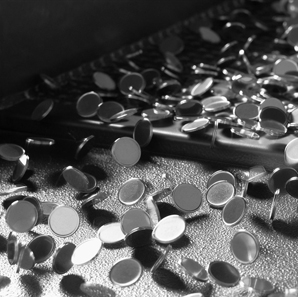March 13, 2012 – You certainly know the problem: You are using the same word as your business partner, nevertheless you are speaking of completely different things. Different languages, different procedures, different aspects – globalization presents our language competence with completely new challenges. MintWorld wants to contribute to liquidate possibilities of misunderstanding. We are working on an encyclopedia of technical terms used by the coin producing industry. These definitions are thought as basis for discussion. We are looking for the appropriate word in your language. And we are looking for your commentaries. Any native speaker who can tell me the exact moment, when a blank becomes a planchet?
Blanks (rounds)
by Henning Berger
Blanks are manufactured by punching strips rolled in coils. The form, round or not-round, is determined by the “blanking” press. The blank becomes a coin, medallion or token through the striking process. The blank is a pre-product of the coin and necessarily determines the main characteristics of it such as, the appearance, weight, geometric dimensions, imprinting response, and conductivity.
Herman Blanton, collector and researcher of Spanish Colonial cobs and editor of Numismatics International Magazine, March 13, 2012:
As it happens I have been researching “planches” and these are sheets of metal (or other material). A planch (singular) is material formed into a the shape of a sheet or plank. The diminutive of planch is planchet, a small planch. These terms must come from old days when work was done by hand. Blanking is a process of removing material from a sheet (punching holes). The pieces removed by blanking are called blanks.





